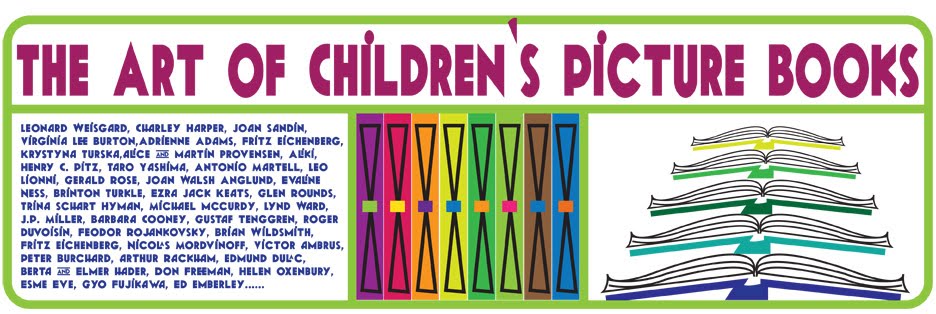I have to be honest, this is one of the most bizarre picture books I've come across. I'm not even sure if it's intended for children. Written by Jan Wahl and illustrated by Caren Caraway, I can't help but think that this story has something to do with female empowerment.
At the beginning of the story we have Kukuroo, a rag picker, who finds a freshly laid egg among the withering cucumber vines. She takes it home to hatch.
A tiny girl hatches out of the egg and the shock of it causes Kukuroo to faint. But the young girl has business to conduct and insists that she be taken to the King.
There she finds Totoco-Ahpop, King of the Eagles and the Wind, admiring his
tattoos. She informs him that she wants to rule his kingdom and that she is stronger than him. The men laugh. She then confounds the king by picking up a heavy jade stool with ease and building a finer palace than his in less than a day.
This angers the king and he orders "Toss the wench into the mud-caked
lake. Now I'll be stronger." But they mistake a cornhusk for her and she
makes a run for it, calling fishes to make a wiggling raft to take her across
the lake.
Here she grabs the tail of a jaguar and safely hides among the brambles and thorns.
After getting a ride from a woodpecker into a field, she pushes her toes into the soil. Rain starts to fall and she starts to grow. She asks herself: "What am I?
Why am I here?" "The wind blew yet she stood firm and the beasts and birds snuggled close and she learned how to grow and love and give warmth." (The feet turning into roots is creepy.)
Speeding ahead, the Cucumber Princess confronts the King, puts him through some tests so he can admit his weakness which causes the princess to love him.
When he asks "Who are you?" she answers; "I Am She Who Makes the Rain Fall. I am She Who Turns the Corn Ripe. I am She Who Gives. Together, TOGETHER we can both make a powerful Kingdom."
There is lightning and thunder, butterflies throng the air and a blue rain falls down. The King and the Cucumber Princess learn to rule together. Kukuroo (the rag picker) was made Keeper of the Butterflies. Weird.
The book states that Caren Caraway's illustrations are inspired by ancient Aztec art with a bit of Mixtec influence. According to Wikipedia the Mixtec (or Mixteca) are indigenous Mesoamerican peoples inhabiting the Mexican states of Oaxaca, Guerrero and Puebla in a region known as La Mixteca. The explanation for the dots is that the Aztecs used dots with day-symbols in their paintings, in this story Caraway used a 21 day cycle.
The Cucumber Princess
By Jan Wahl
Illustrated by Caren Caraway
Stemmer House Publishers, 1981






















































